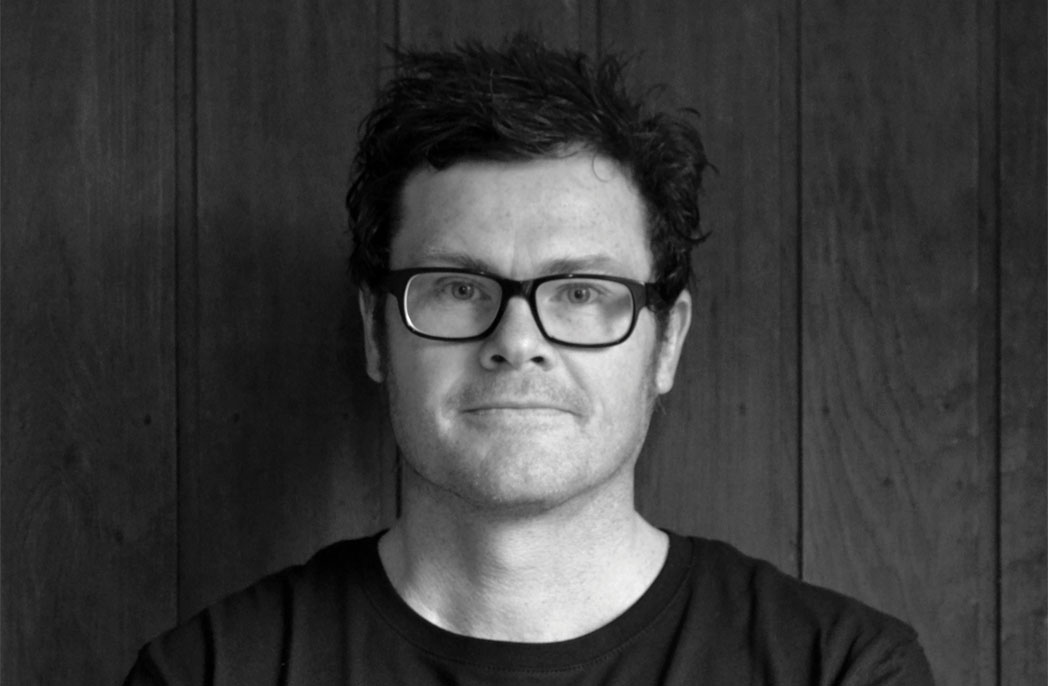
When modernity meets history – Finn Street House by Ben Walker Architects
When modernity meets history – Finn Street House by Ben Walker Architects
Share
Finn Street House by Ben Walker Architects comprises alterations and additions to a 1950s “Tocumwal” cottage in Canberra’s Inner North.
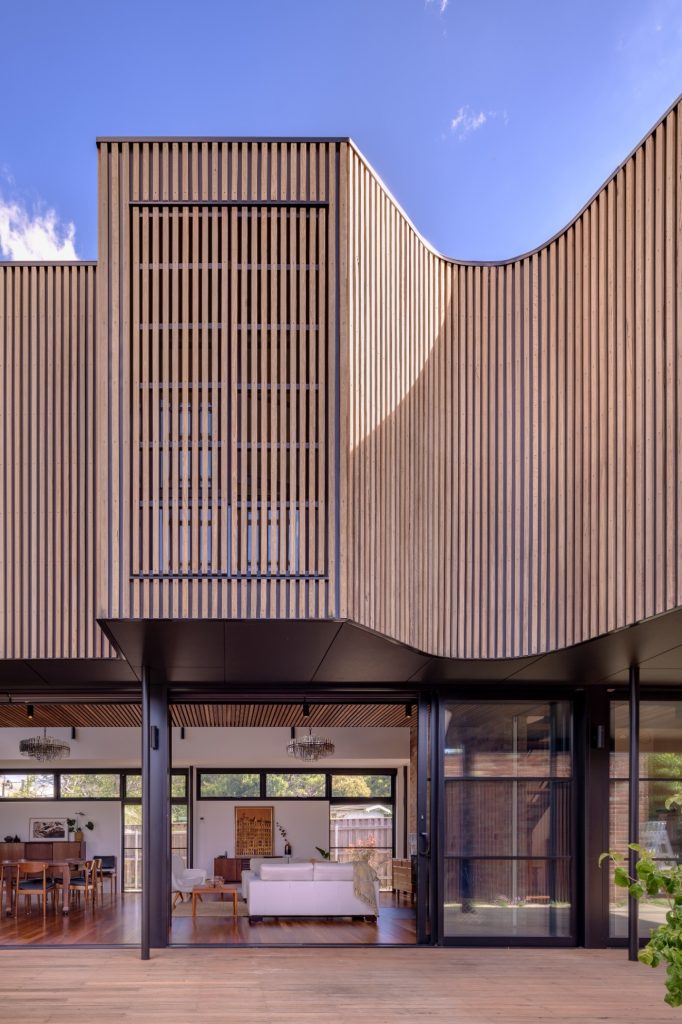
Finn Street House, originally a cottage, was relocated to Canberra from a former military intelligence base built during World War II in the southern NSW town of Tocumwal.
It is one of a number of heritage-listed examples of the Tocumwal housing typology remaining in Canberra.
The original cottage was retained and refurbished by the practice, with minor modifications made to the rear of the house to accommodate a connection through to the new buildings.
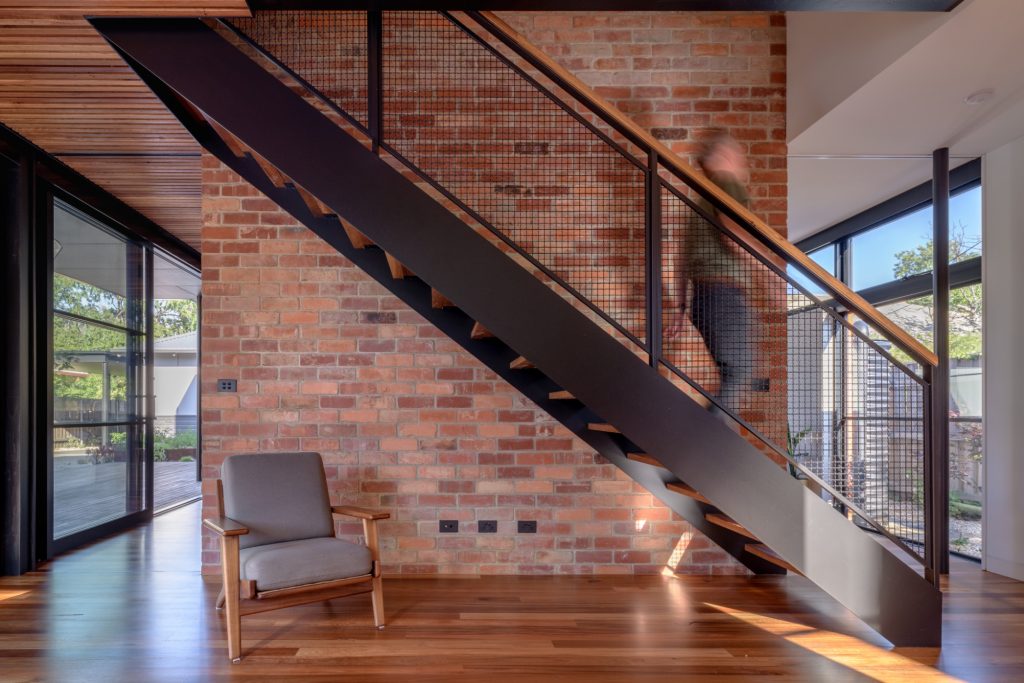
“The new additions were proposed to espouse a clearly discernible change to the architectural and visual character of the existing heritage listed house – this retains the ability to visually read the original proportions and details of the historic cottage,” says Ben Walker.
“The shape and volume of the new wing were largely established by the setback and height controls of the local planning codes, but with the internal planning and layout also influencing the final building form.”
A new two-storey wing was added to the rear of the original cottage that accommodates kitchen/dining/living, rumpus space, master bedroom and loft. An external stand-alone studio was also added that can be used as guest quarters or for recreation.
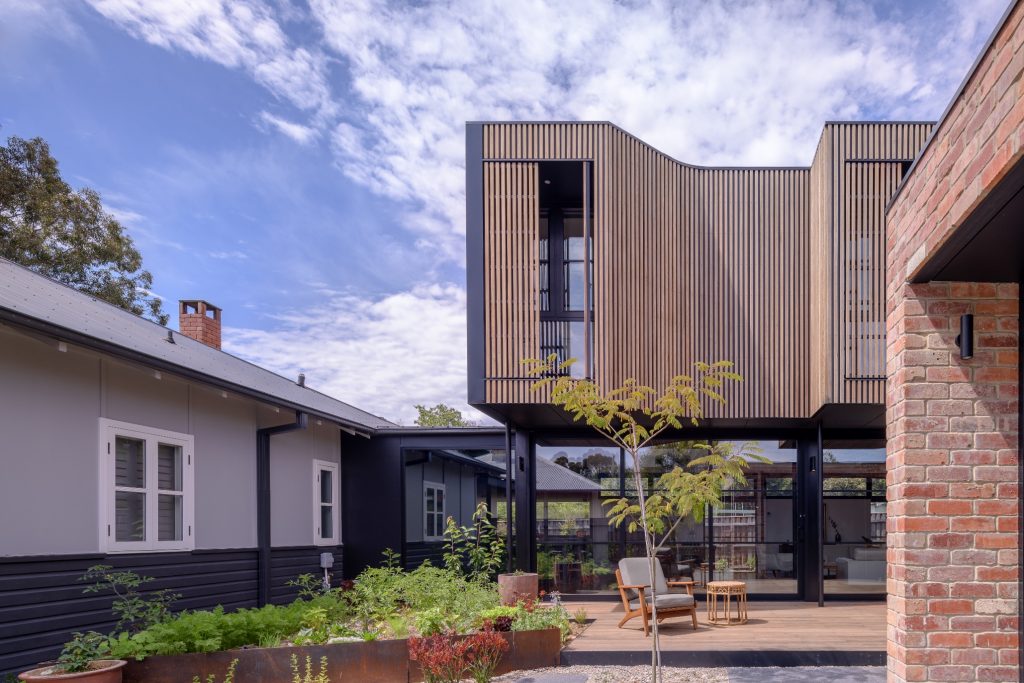
The new wing provides light-filled north-facing living spaces that contrast the introspective qualities of the original house.
The additions provide flexibility in living arrangements and a clear and convenient connection to rear gardens and decks. High-performance glazing systems, operable external shade screens and isolated internal thermal mass in recycled Canberra brick assist in passively regulating temperatures during Canberra’s summer and winter extremes.
Windows along the southern and western faces of the new additions provide views of Canberra’s iconic Telstra Tower and Black Mountain landscape.
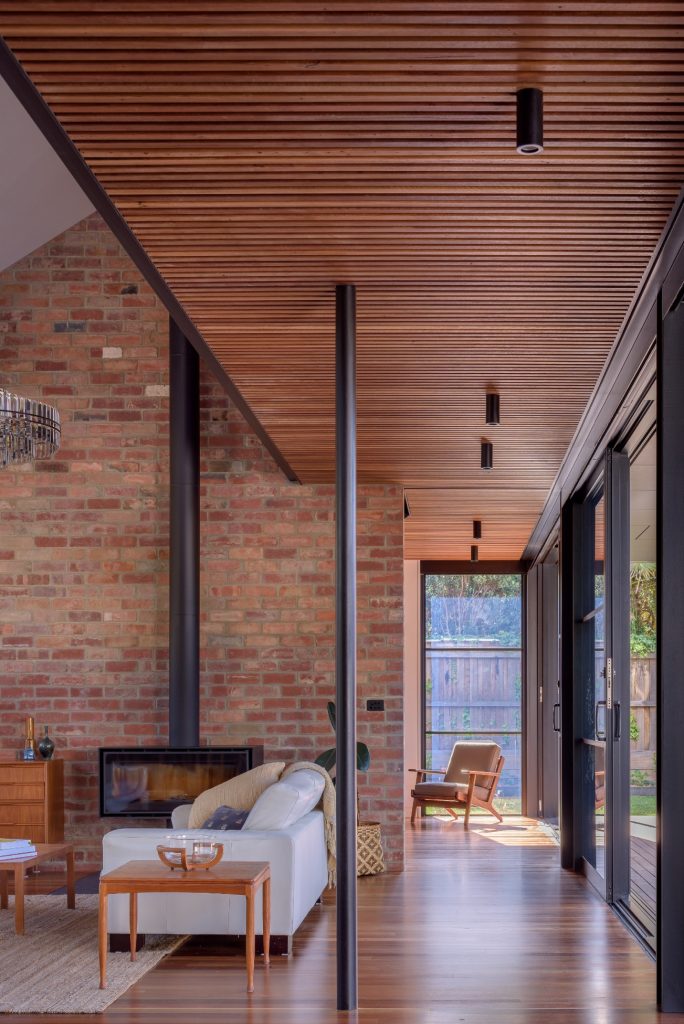
The new work is characterised by a fluid timber façade and a series of screens at the upper level that is sculpted to respond to window positions and massing.
The upper floor overhangs the north-facing ground floor glazing to provide needed shade in summer and sheltered coverage of an outdoor dining zone.
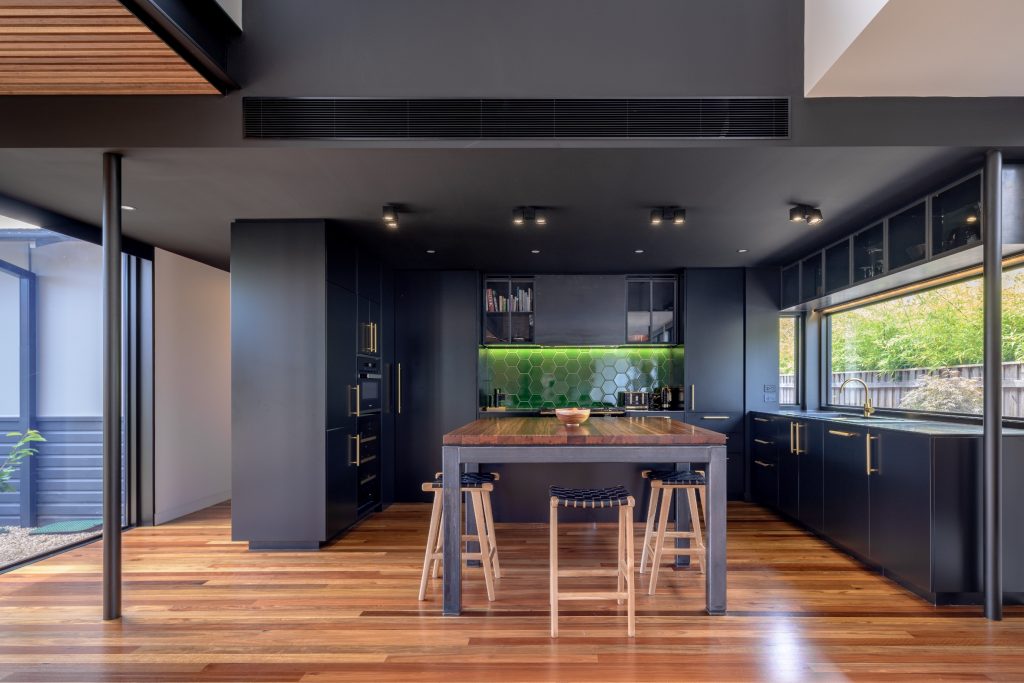
Operable and sliding screens to the upper floor windows and walls of the studio allow the residents to control required levels of shade and privacy dependent on seasonal conditions and living functions.
Interiors include re-milled timber flooring and ceiling battens and recycled Canberra Red bricks.
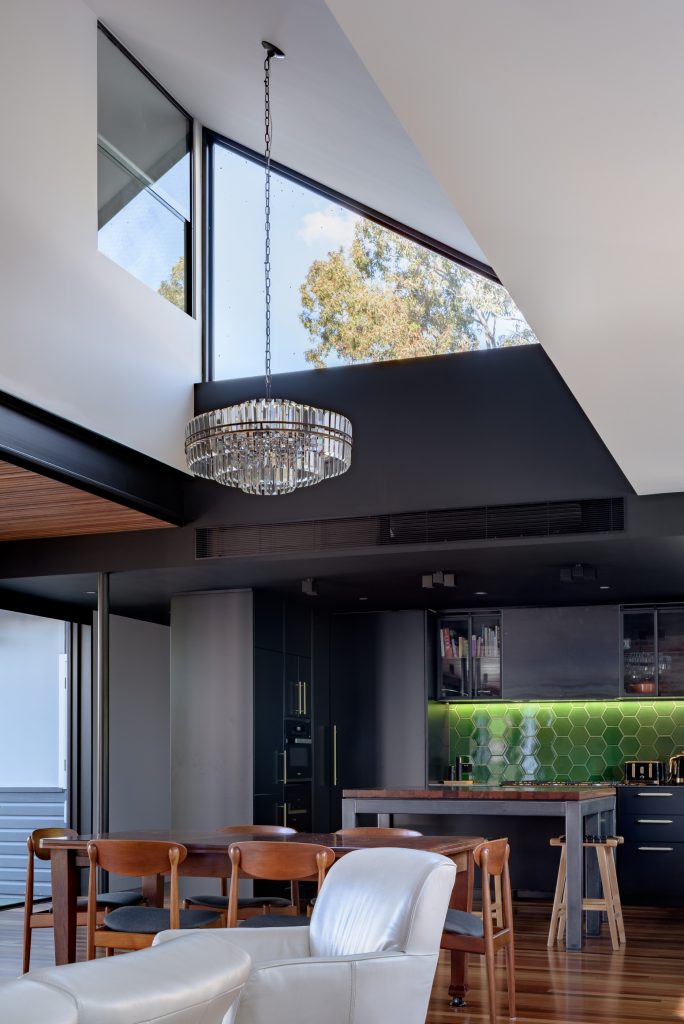
Kitchen joinery includes mild steel flat plat benches and cupboard fronts to clearly articulate construction processes and hand-crafted elements.
Glazed hexagon tiles in wet areas and splash-backs reference the honeycomb interest of the clients.
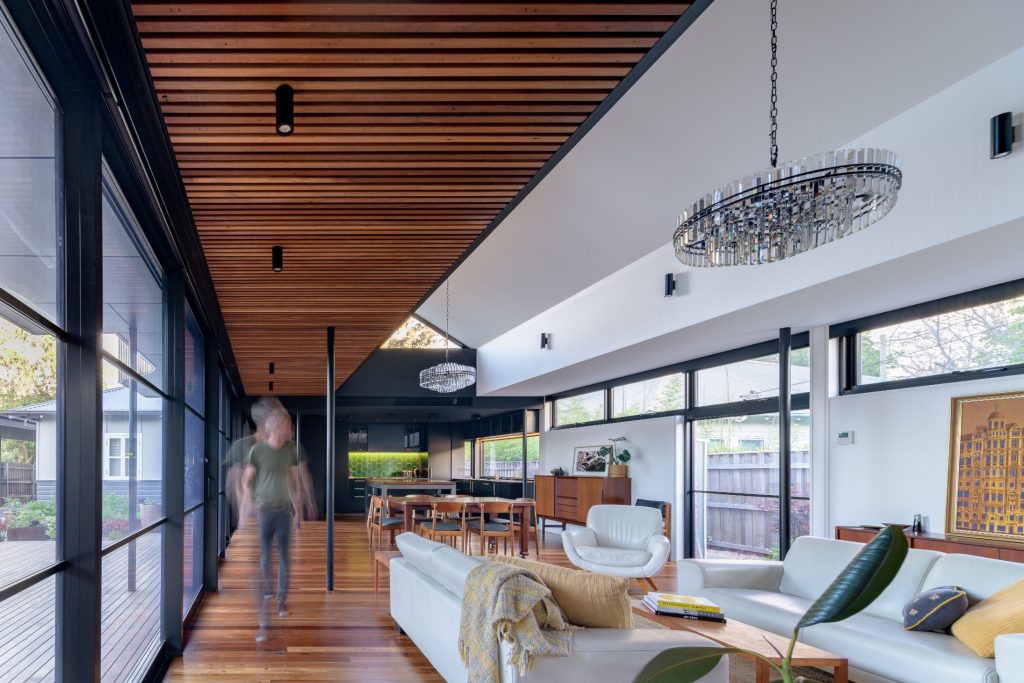
The project has been carefully crafted by the building and joinery teams to provide rich interior textures that showcase the sculptural massing of the new wing when it is viewed from afar.
The project is a delight to discover when an unexpected new wing is spotted from the street.
Earlier this year, Powerhouse Ultimo revealed transformative design; read more about it here.
You Might also Like
